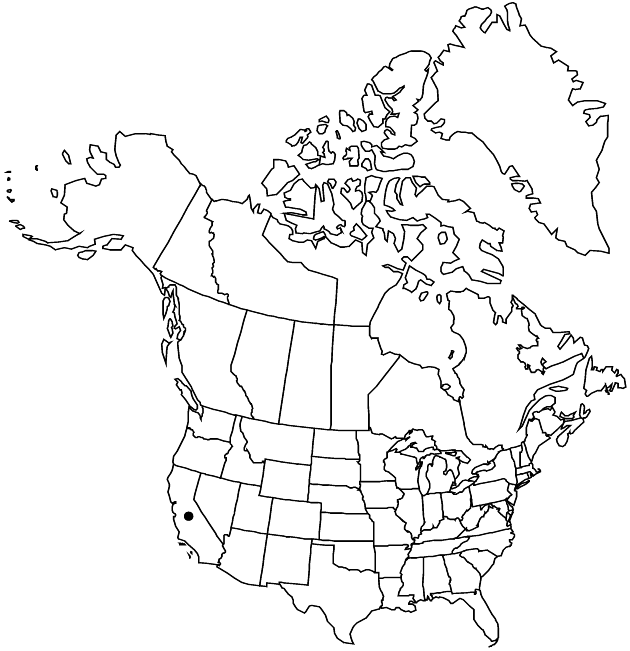Baccharis vanessae
Phytologia 46: 216, figs. 2, 3. 1980.
Shrubs, 50–200 cm (sprawling, densely stemmed from crowns, broomlike). Stems erect, slender, rounded, smooth, glabrous or stipitate-glandular proximal to heads. Leaves often withering and sparse by flowering; sessile; blades (1-nerved) filiform to linear-oblanceolate, 10–30 × 1–3 mm (slightly fleshy), bases narrowed, margins entire (revolute), apices acute (mucronate), faces glabrous, gland-dotted. Heads borne singly or in (pedunculate clusters) in loose paniculiform or racemiform arrays. Involucres funnelform; staminate 3–5 mm, pistillate 3–5 mm. Phyllaries lanceolate (not keeled), 1–4 mm, margins ciliate, chartaceous, apices acute to acuminate (abaxial faces scurfy-glandular). Staminate florets 15–22; corollas 4 mm. Pistillate florets ca. 25; corollas 2.5 mm. Cypselae 2–3 mm, 10-nerved, glabrous or ciliate along nerves; pappi 7–10 mm. 2n = 18.
Phenology: Flowering Oct.
Habitat: Chaparral, Torrey-pine forests
Elevation: 60–300 m
Discussion
Of conservation concern.
Baccharis vanessae is highly localized in chaparral remnants in relictual Torrey Pine forests of coastal San Diego County. It is distinguished from other species of Baccharis by its filiform leaves and delicate, ciliate phyllaries that reflex at maturity.
Selected References
None.
